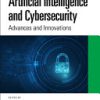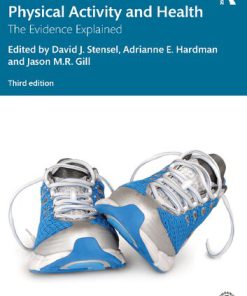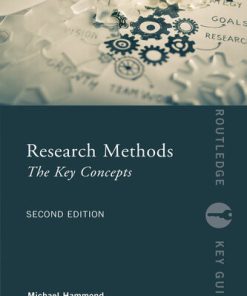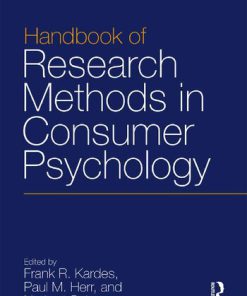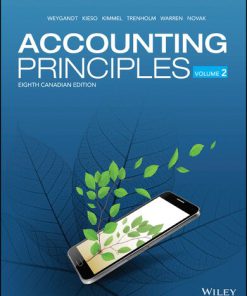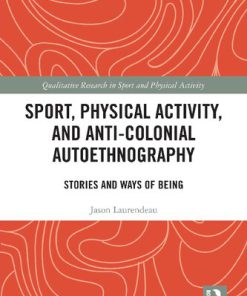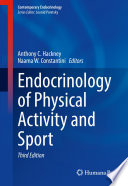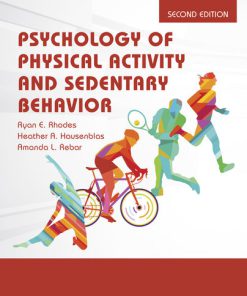Research Methods in Physical Activity 8th Edition by Jerry Thomas, Philip Martin, Jennifer Etnier, Stephen Silverman ISBN 1718201036 9781718201033
$50.00 Original price was: $50.00.$25.00Current price is: $25.00.
Research Methods in Physical Activity 8th Edition by Jerry Thomas, Philip Martin, Jennifer Etnier, Stephen Silverman – Ebook PDF Instant Download/Delivery: 1718201036, 9781718201033
Full dowload Research Methods in Physical Activity 8th Edition after payment
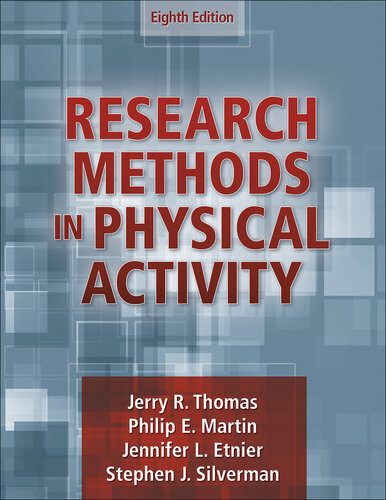
Product details:
ISBN 10: 1718201036
ISBN 13: 9781718201033
Author: Jerry R. Thomas; Philip Martin; Jennifer L. Etnier; Stephen J. Silverman
Research Methods in Physical Activity 8th Table of contents:
Part I: Overview of the Research Process
1. Introduction to Research in Physical Activity
The Nature of Research
Unscientific Versus Scientific Methods of Problem-Solving
Alternative Models of Research
Types of Research
Overview of the Research Process
Parts of a Thesis: A Reflection on the Steps in the Research Process
Summary
2. Developing the Problem and Using the Literature
Identifying the Research Problem
Purpose of the Literature Review
Basic Literature Search Strategies
Steps in the Literature Search
Summary
3. Presenting the Problem
Choosing the Title
Developing the Introduction: Background and Justification
Stating the Research Purpose
Presenting the Research Hypothesis
Operationally Defining Terms
Basic Assumptions, Delimitations, and Limitations
Presenting the Significance of the Study in a Thesis or Dissertation
Differences Between the Thesis and the Journal Article
Summary
4. Formulating the Method
How to Present Methods
Why Planning the Methods Is Important
Two Principles for Planning Experiments
Describing Participants
Selecting and Describing Instruments
Describing Procedures
Describing Design and Analysis
Establishing Cause and Effect
Interaction of Participants, Measurements, and Treatments
Summary
5. Ethical Issues in Research and Scholarship
Seven Areas of Research Misconduct
Ethical Issues Regarding Copyright
Model for Considering Scientific Misconduct
Working With Faculty
Protecting Human Participants
Protecting Animal Subjects
Summary
Part II: Statistical and Measurement Concepts in Research
6. Becoming Acquainted With Statistical Concepts
Why We Need Statistics
Use of Computers in Statistical Analysis
Description and Inference Are Not Statistical Techniques
Ways to Select a Sample
Ways to Assign Participants to Groups
Post Hoc Justifications
Difficulty of Random Sampling and Assignment: Good Enough?
Measures of Central Tendency and Variability
Basic Concepts of Statistical Techniques
Data for Use in the Remaining Statistical Chapters
Summary
7. Statistical Issues in Research Planning and Evaluation
Probability
Hypothesis Testing
Meaningfulness (Effect Size)
Power
Using Information in the Context of the Study
Summary
8. Relationships of Variables
What Correlational Research Investigates
Understanding the Nature of Correlation
What the Coefficient of Correlation Means
Using Correlation for Prediction
Partial Correlation
Semipartial Correlation
Procedures for Multiple Regression
Logistic Regression
Discriminant Function Analysis
Moderators and Mediators
Multivariate Forms of Correlation
Summary
9. Differences Between Groups
How Statistics Test Differences
Types of t Tests
Interpreting t
Relationship of t and r
Analysis of Variance
Analysis of Covariance
Experiment-Wise Error Rate
Understanding Multivariate Techniques
Summary
10. Nonparametric Techniques
Chi Square: Testing the Observed Versus the Expected
Procedures for Rank-Order Data
Correlation
Differences Between Groups
Summary
11. Measuring Research Variables
Validity
Reliability
Methods of Establishing Reliability
Intertester Reliability (Objectivity)
Standard Error of Measurement
Using Standard Scores to Compare Performance
Measuring Movement
Measuring Written Responses
Measuring Affective Behavior
Scales for Measurement
Measuring Knowledge
Item Response Theory
Summary
Part III: Types of Research
12. Sociohistorical Process in Sport Studies
Development of the Discipline
Theory and Sport History
Relationship Between Theory and Method
Research Sources
Research Topics
Research Design
Data Analysis and Interpretation
Research Findings
Exemplary Studies in Sport History
Summary
13. Philosophical Research in Physical Activity
Identifying the Purposes of Philosophical Research
Philosophical Inquiry Continuum
Locating a Research Problem
Analyzing a Research Problem
Summary
14. Research Synthesis
Purpose of Research Synthesis
Using Systematic Review for Research Synthesis
Summary
15. Surveys
Questionnaires
Additional Considerations for Online Surveys
Delphi Method
Personal Interviews
Normative Surveys
Summary
16. Other Descriptive Research Methods
Developmental Research
Case Studies
Observational Research
Unobtrusive Research Techniques
Correlational Research
Summary
17. Physical Activity Epidemiology Research
U.S. National Physical Activity Guidelines and Plan
Observational Versus Experimental Research
What Is Physical Activity Epidemiology?
Definitions of Physical Activity and Its Components
Assessment of Physical Activity
Epidemiological Study Designs
Reading and Interpreting a Physical Activity Epidemiological Study
Summary
18. Experimental and Quasi-Experimental Research
Sources of Invalidity
Threats to Internal Validity
Threats to External Validity
Controlling Threats to Internal Validity
Controlling Threats to External Validity
Types of Designs
Summary
19. Qualitative Research
Procedures in Qualitative Research
Data Analysis
Concluding Remarks
Summary
20. Mixed-Methods Research
Combining Quantitative and Qualitative Methods
Designing Mixed-Methods Research
Issues in Mixed-Methods Research
Examples of Mixed-Methods Research
Summary
Part IV: Writing the Research Report
21. Completing the Research Process
Research Proposal
Thesis and Dissertation Proposals
Advisor and Dissertation Committee
The Good Scholar Must Research and Write
Scientific Writing
First Things Are Sometimes Best Done Last
Developing a Good Introduction
Describing the Methods
The Proposal Process
Preparing and Presenting Qualitative Research Proposals
Writing Proposals for Granting Agencies
Submitting Internal Proposals
Completing Your Thesis or Dissertation
Results and Discussion
Handling Multiple Experiments in a Single Report
Using Tables and Figures
Summary
22. Ways of Reporting Research
Basic Writing Guidelines
A Brief Word About Acknowledgments
Thesis and Dissertation Format: Traditional Versus Journal
Helpful Hints for Successful Journal Writing
Revising Research Papers
Writing Abstracts
Making Oral and Poster Presentations
Summary
Appendix
References
Author Index
Subject Index
About the Authors
People also search for Research Methods in Physical Activity 8th:
research methods in physical activity
research methods in physical activity pdf
research methods in physical activity 7th edition pdf
research methods in physical activity eighth edition
Tags:
Jerry Thomas,Philip Martin,Jennifer Etnier,Stephen Silverman,Research Methods,Physical Activity
You may also like…
Medicine - Others
Physical Activity and Health The Evidence Explained 3rd Edition Adrianne E. Hardman
Uncategorized
Business & Economics - Sales & Marketing
Handbook of Research Methods in Consumer Psychology 1st Edition Frank R. Kardes (Editor)
Business & Economics - Accounting
Accounting Principles, 8th Canadian Edition, Volume 2 Jerry J. Weygandt
Others
Ageing Physical Activity Recreation and Wellbeing 1st Edition by Barbara 1443891045 9781443891042
Medicine - Endocrinology
Endocrinology of Physical Activity and Sport 3rd Edition Anthony C. Hackney
Hobbies & Games - Air Sports
Psychology of Physical Activity and Sedentary Behavior 2nd Edition Ryan E. Rhodes

